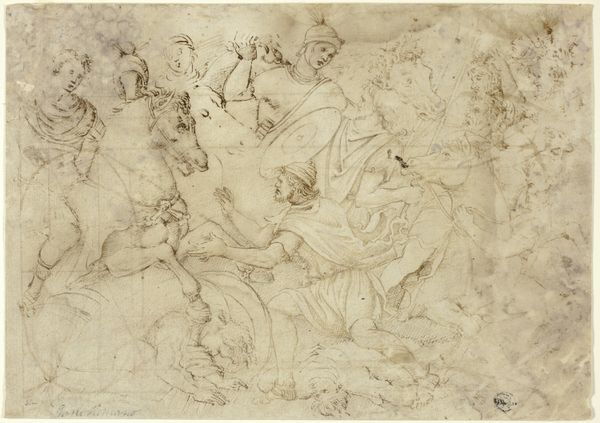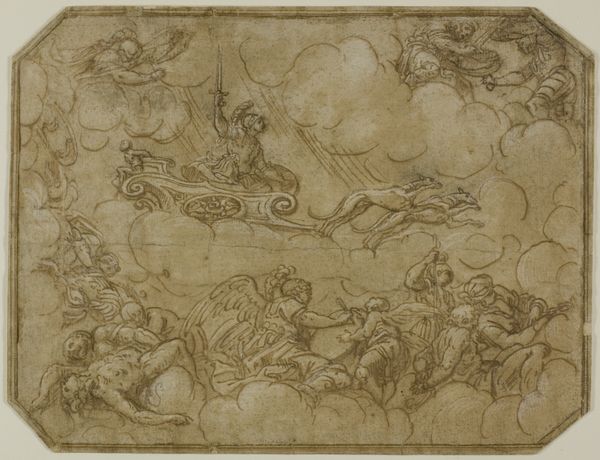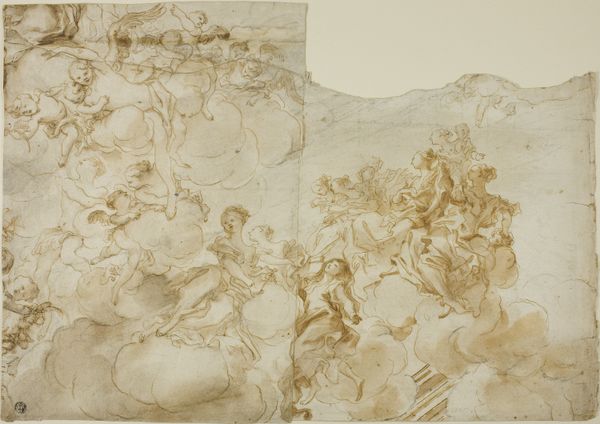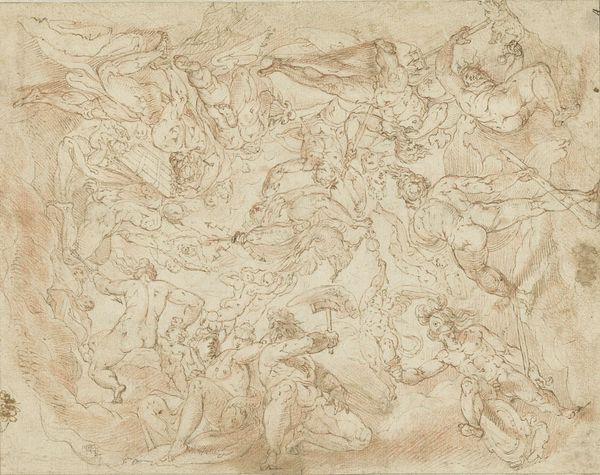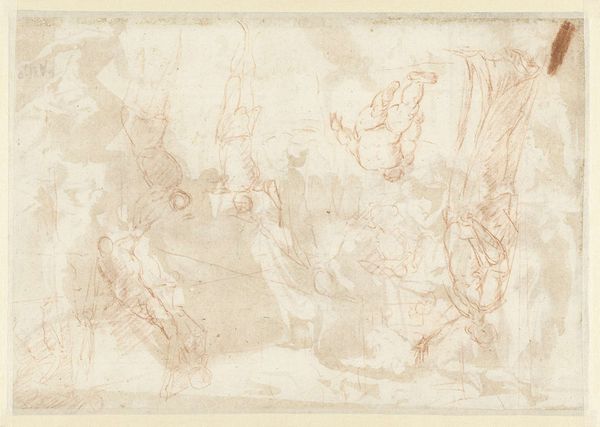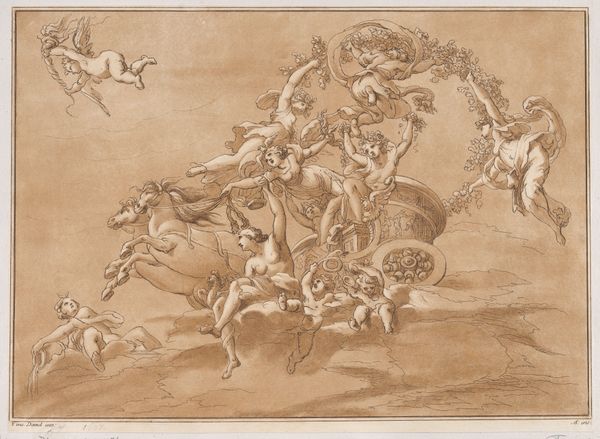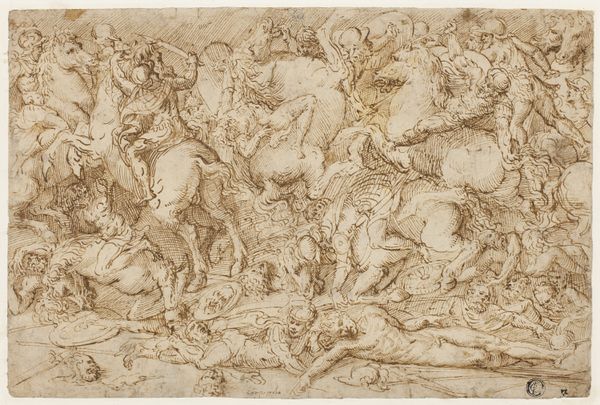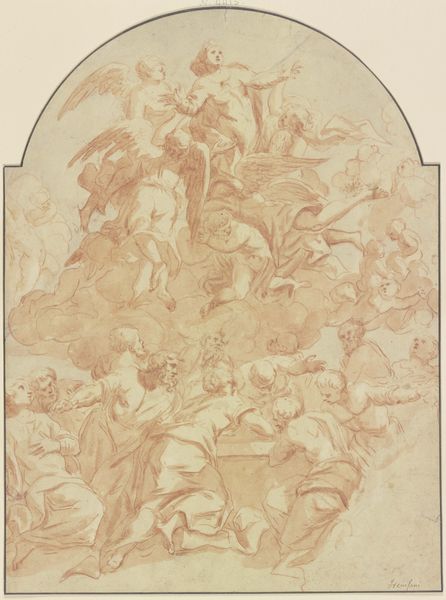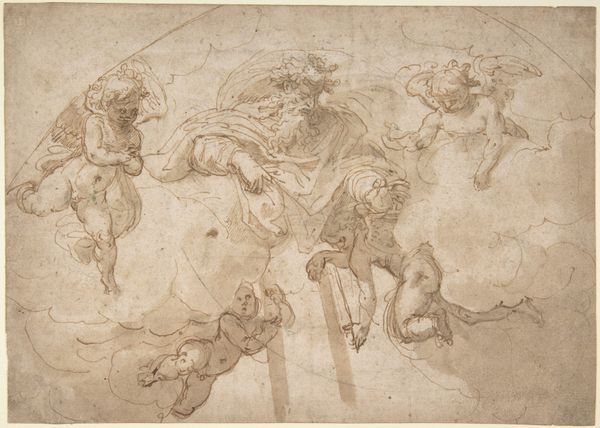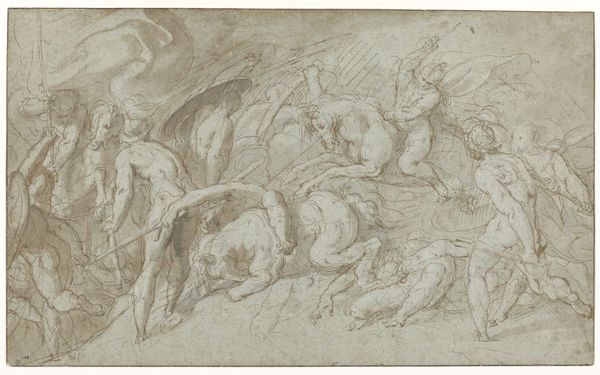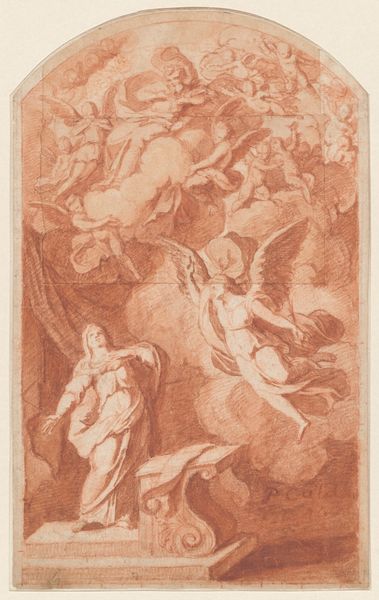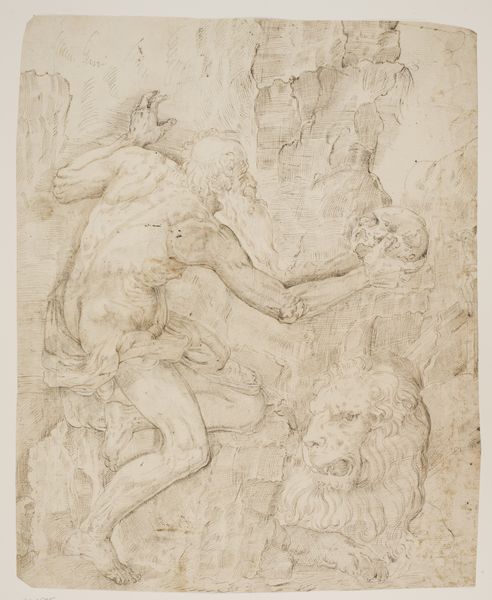
drawing
#
portrait
#
drawing
#
mannerism
#
figuration
#
pencil drawing
#
history-painting
Dimensions: sheet: 36 x 675 cm (14 3/16 x 265 3/4 in.) (irregular)
Copyright: National Gallery of Art: CC0 1.0
Curator: Here we have Pirro Ligorio's drawing, "Diana and Apollo Slaughtering the Children of Niobe," created around 1550. It depicts a scene of divine retribution rendered in delicate red chalk. Editor: My immediate impression is one of dynamic chaos, offset by the overall soft texture. There's a strong diagonal composition that whips your eye across the carnage. Curator: Exactly! The composition, combined with the subject, powerfully evokes collective memory, doesn't it? The massacre of Niobe’s children is a recurring warning in classical art, echoing hubris and divine wrath. Think of it as a symbolic anchor for cultural fears around pride and fate. Editor: Definitely, and structurally, the bodies are arranged almost like a collapsing pyramid, giving visual form to that societal anxiety and emphasizing the fragility of human existence when pitted against the divine. The contrast between the ethereal, floating gods and the writhing figures below reinforces the idea of absolute power. Curator: Note how Diana and Apollo are positioned; aloft on clouds, actively participating in the destruction. The power dynamic is heightened, I agree. It speaks volumes about how authority, in this period, viewed justice – swift, merciless and ordained. The artist invites us to see how a society codifies concepts like guilt, consequence and moral reckoning. Editor: Yes, there’s also an aesthetic coolness, though – the almost clinical depiction, the beauty inherent in the red chalk technique, a contrast to the grisly scene depicted. Curator: Which brings to mind the concept of artistic distance as a tool to mitigate the overwhelming horror of events. Does the aesthetic remove us or further involve us? That, perhaps, is Ligorio's central provocation to his viewer. Editor: It's a question of layering: layering beauty and horror, and then letting us dissect the experience. Very mannerist in that regard. The drawing, while historical in subject, echoes timeless considerations about order, morality, and what truly dictates these things in the end. Curator: Ultimately, Ligorio gives us much to consider—about divine justice and artistic representation, as viewed through the lens of cultural narrative and artistic practice in mid-16th century Italy. Editor: An effective intersection of mythology, technique, and historical questioning then. The dialogue, both within the drawing and with us, remains vital centuries later.
Comments
No comments
Be the first to comment and join the conversation on the ultimate creative platform.
